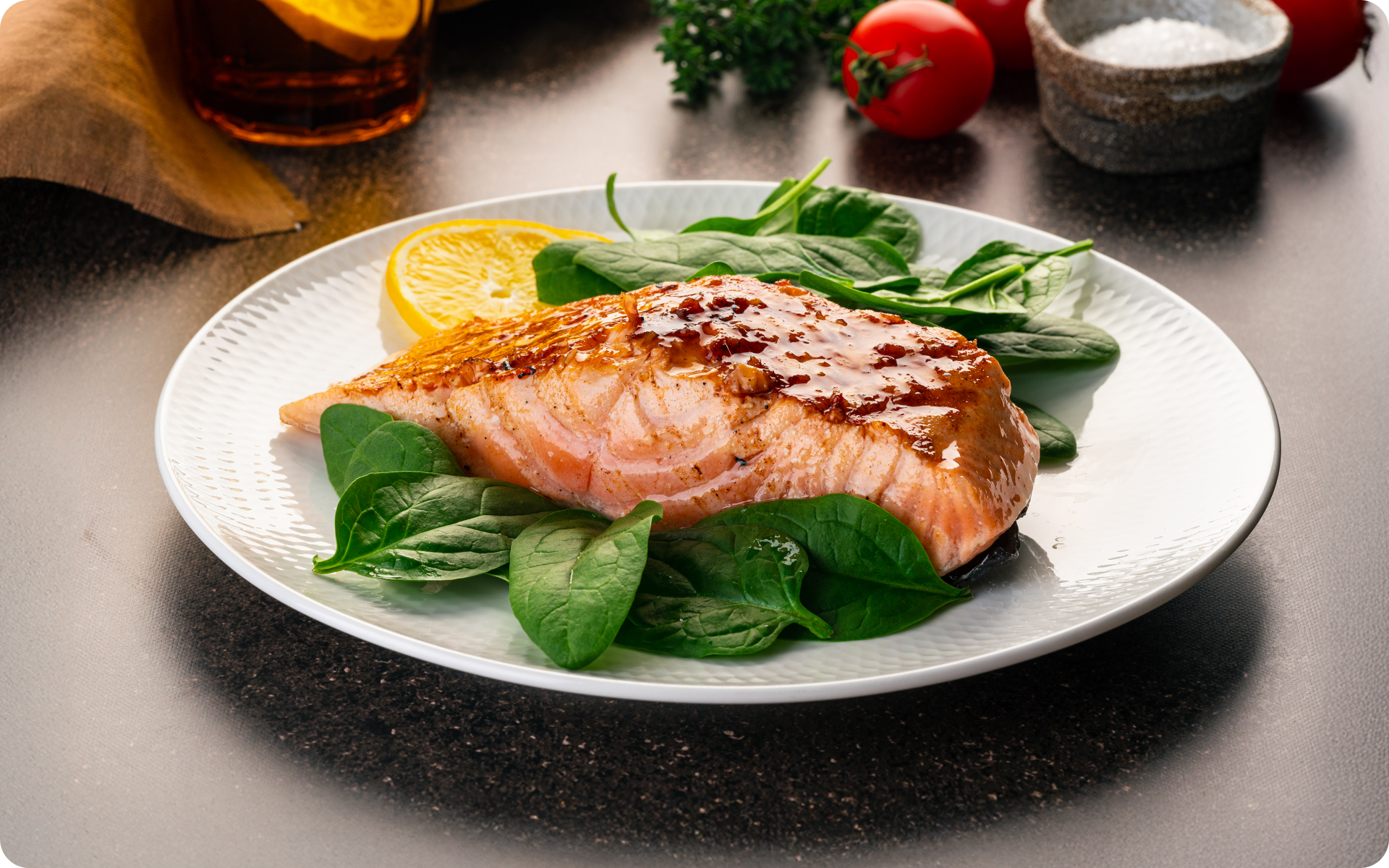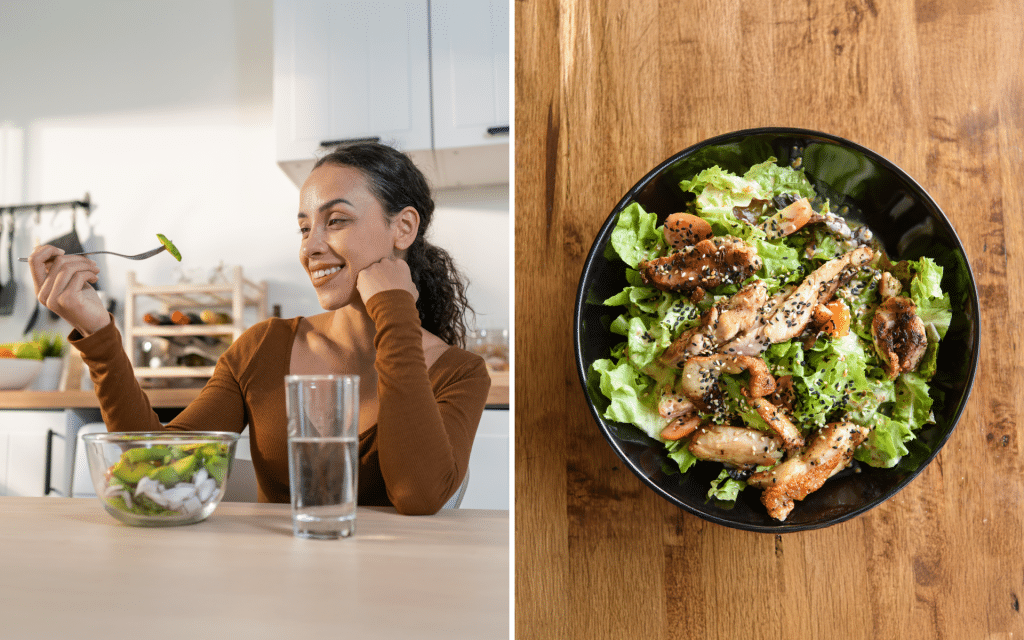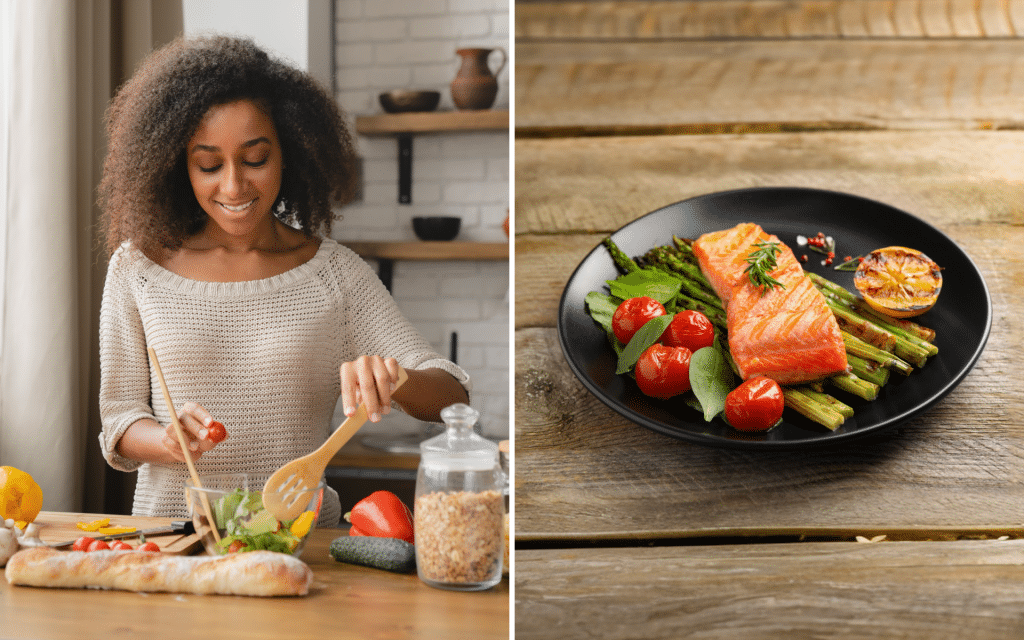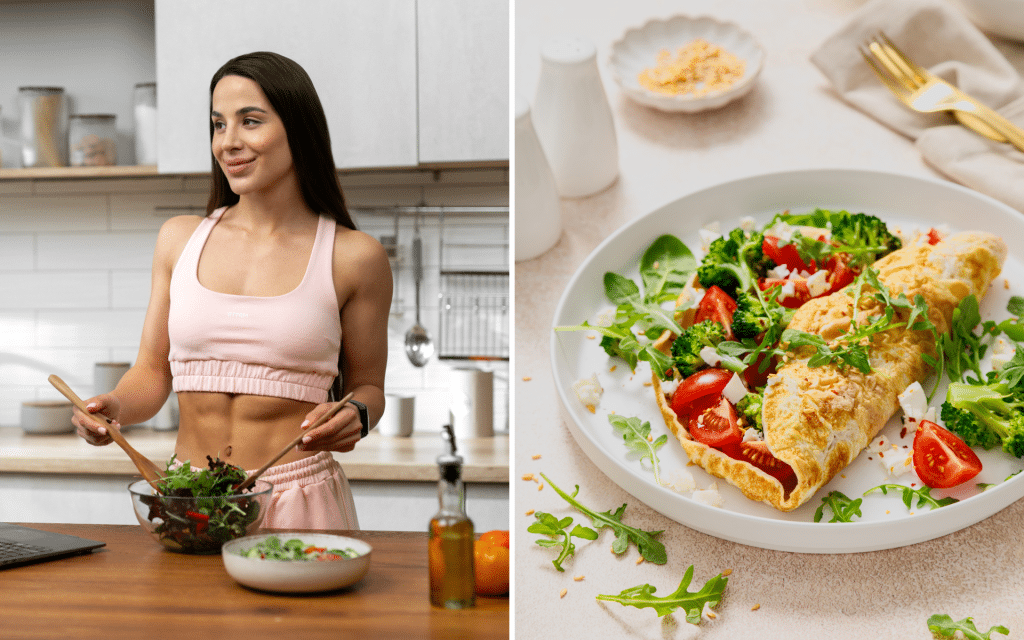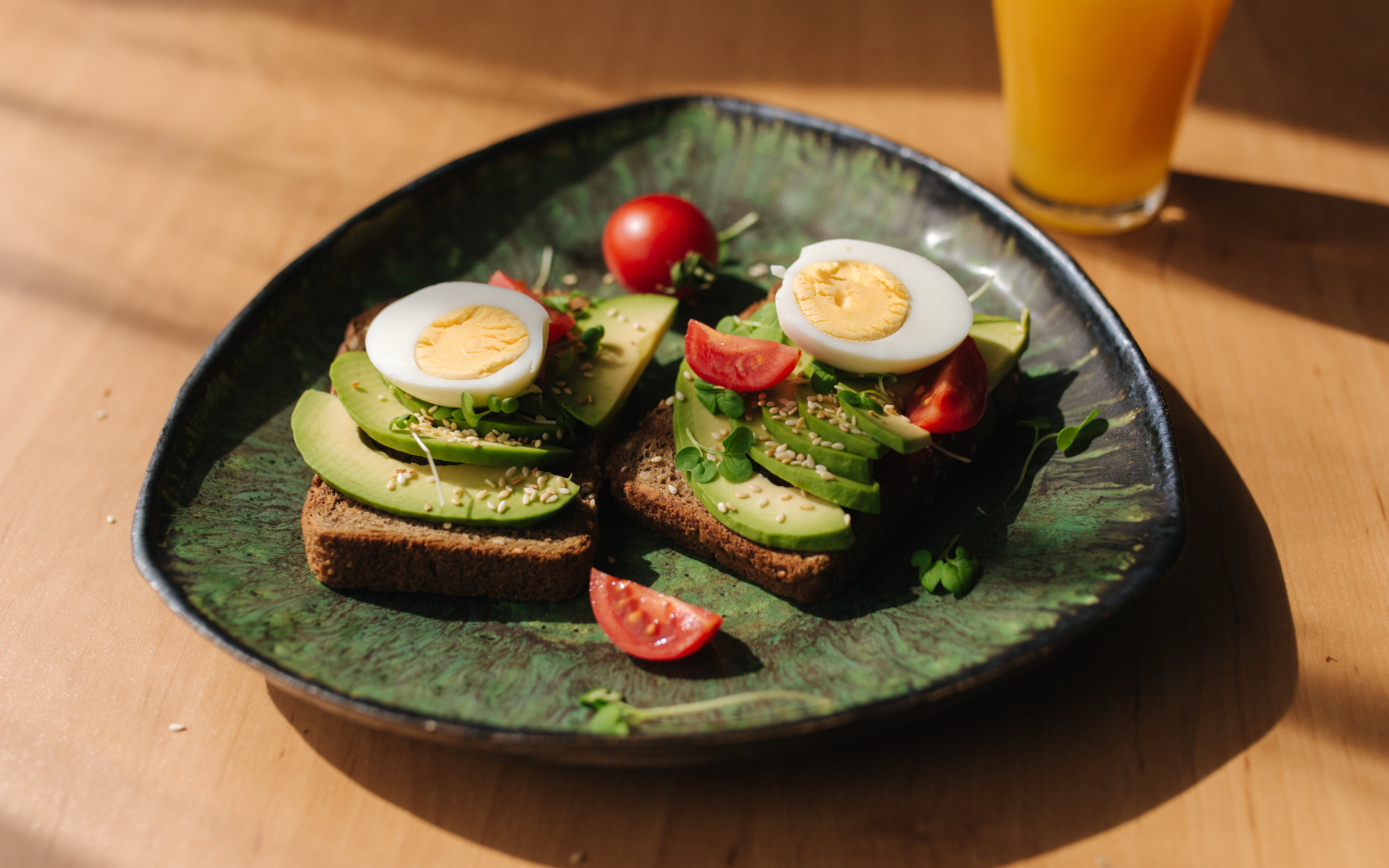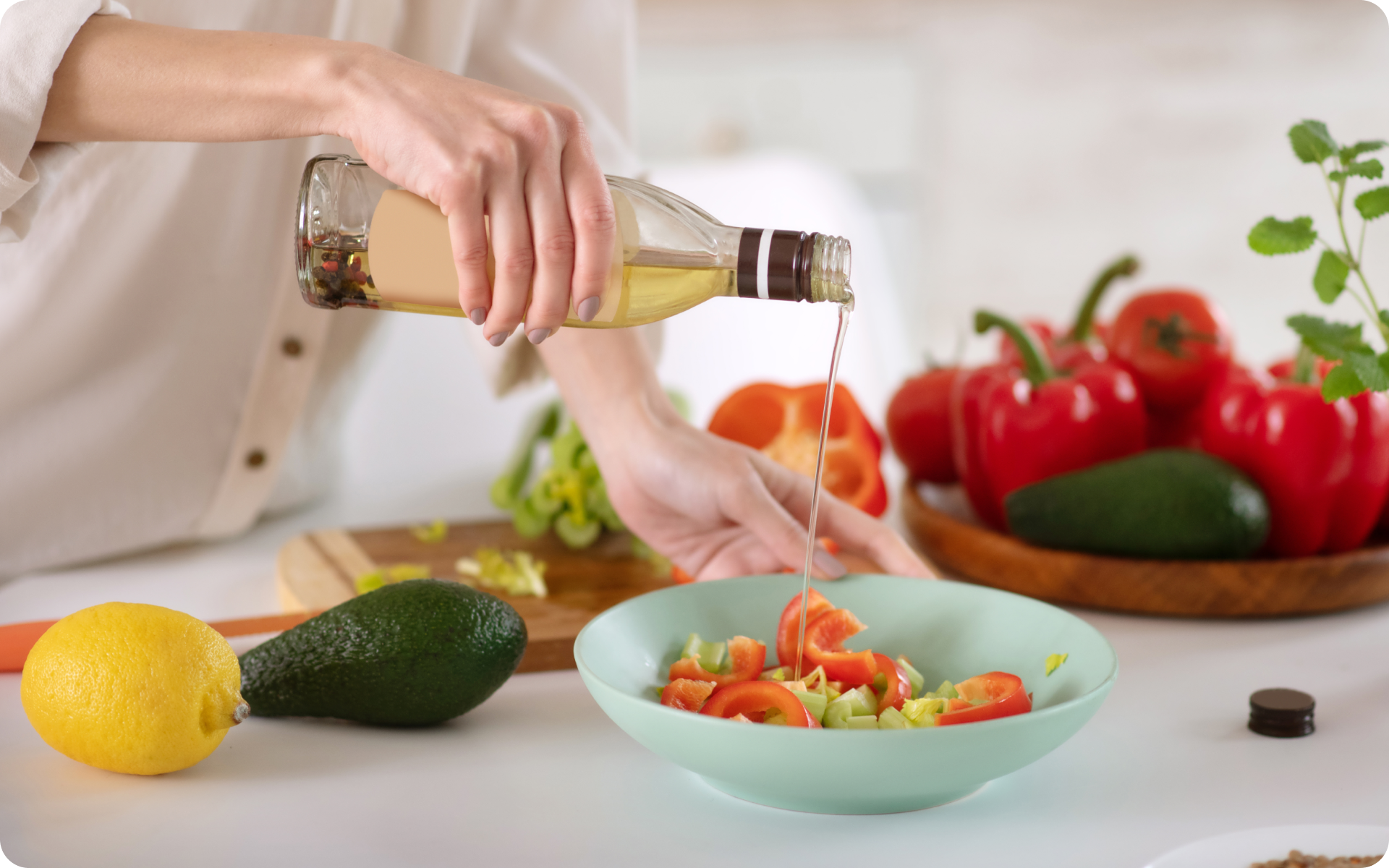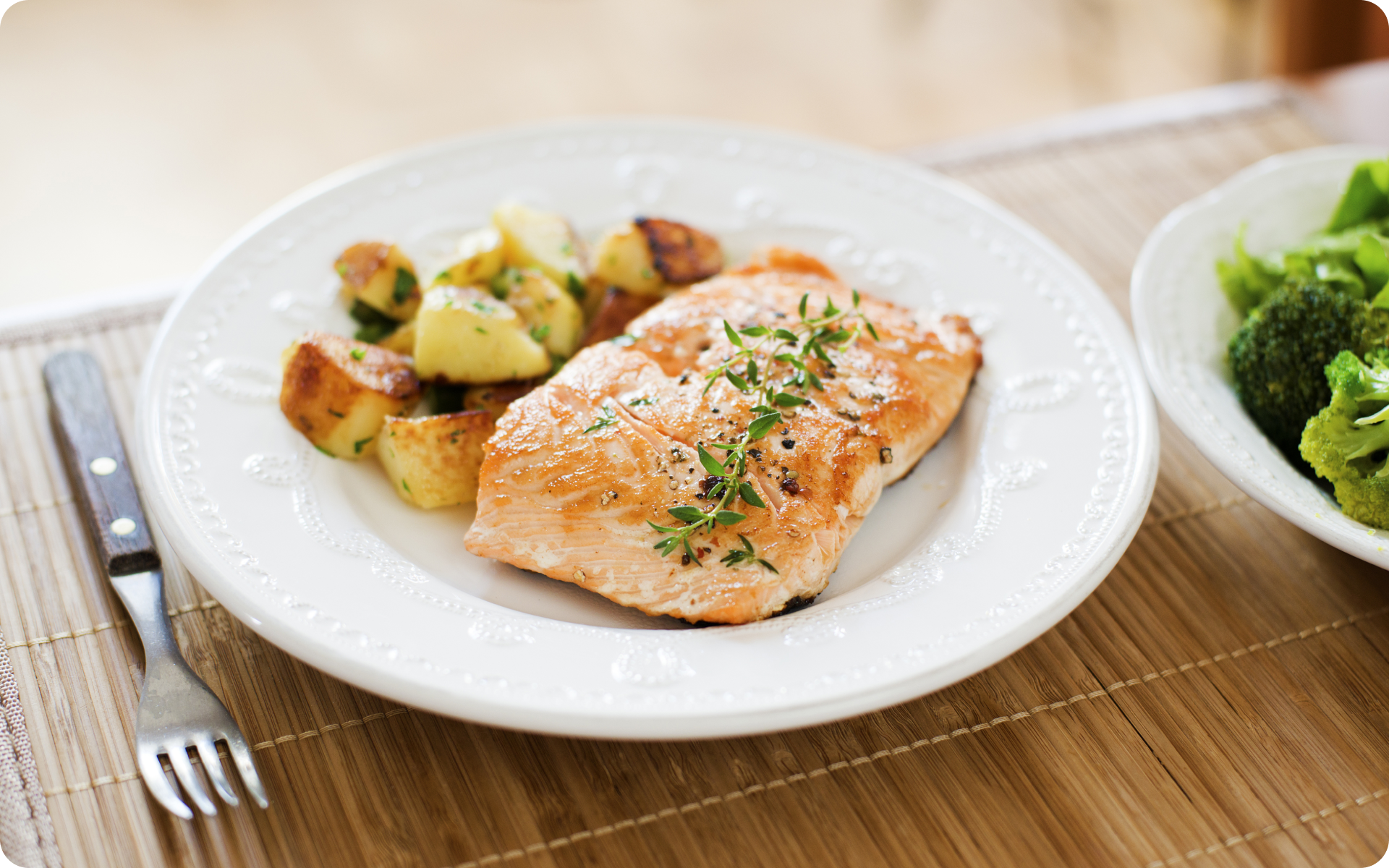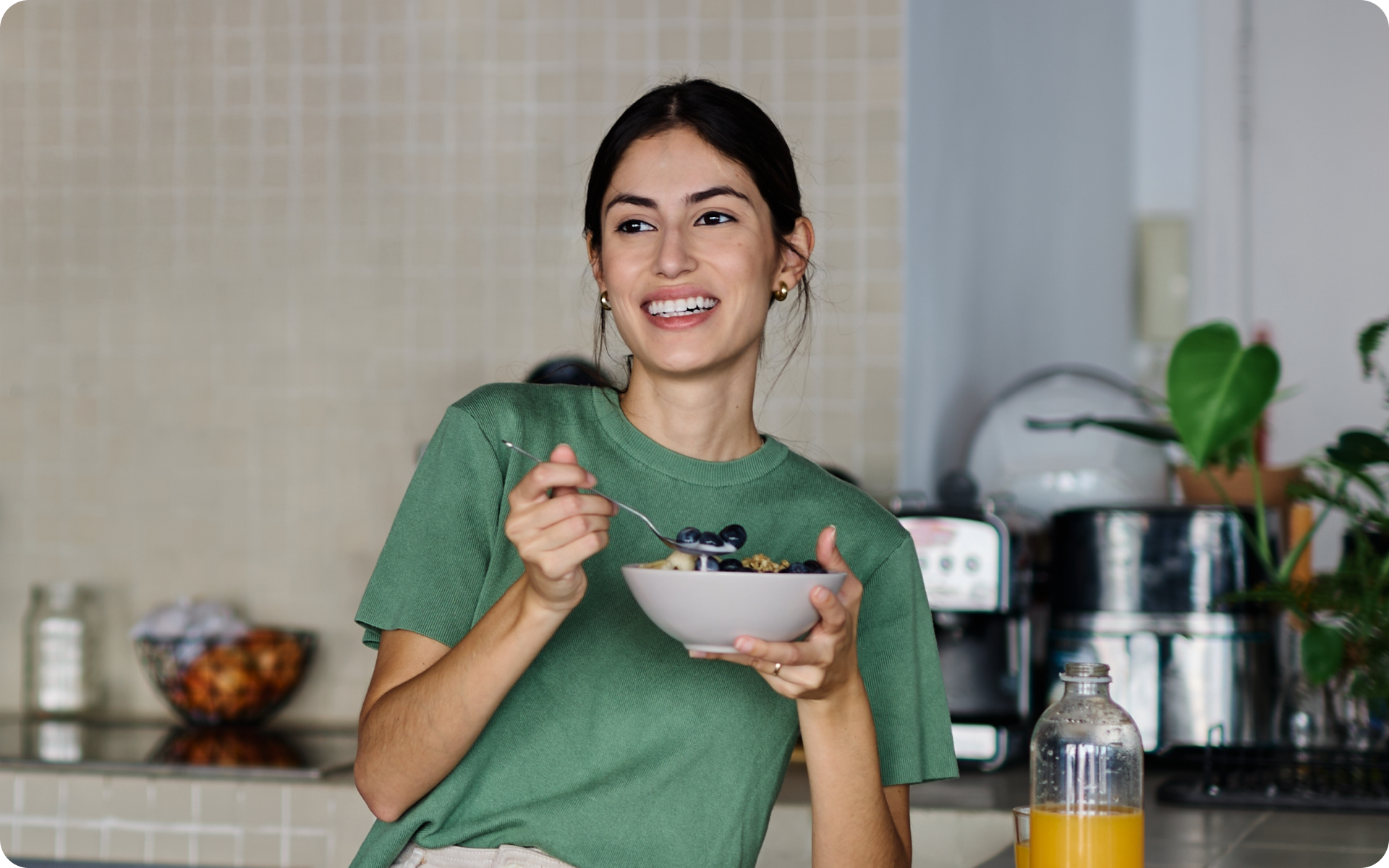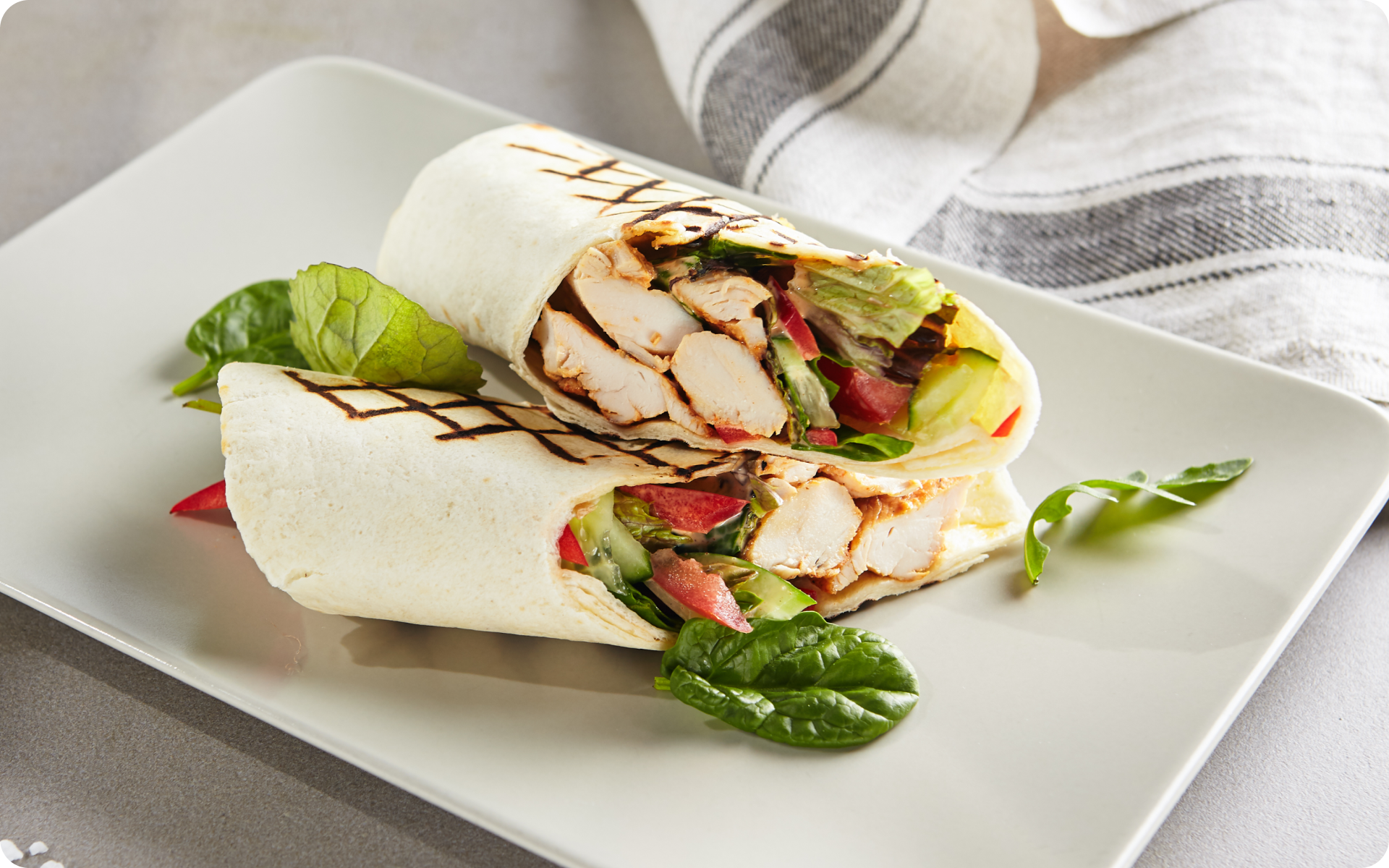Low-carb recipes for weight loss have gained popularity over the past years.
People desire to shed pounds and may be motivated to make different sacrifices to reach their goals. Cutting carbs is a popular method to reduce calorie intake and lose weight.
But it feels like carbs are often too demonized, with many linking carbs to a variety of negative associations, one of which is weight gain.
Yet, many carb-rich foods have essential nutrients that help our body function, including carbohydrates.
Aside from answering the question, “Can you lose weight eating zero-carb meals?”, you will explore easy no-to-low-carb recipes and the potential risks of no-carb diets.
What Is An Easy Way To Make Zero Carb Meals?
You should focus purely on carb substitution when trying a no-carb meal plan.
This subbing means filling your plate with protein and healthy fats instead of carbs.
Low carb meals for family, or zero-carb dishes, do not require special fancy products.
Check out these easy recipes that contain zero or nearly zero carbs you can make at home today.
- Air Fryer Chicken
- Pork Rind Pancakes
- Microwave Pepperoni Chips
- Carnivore Egg-in-a-Hole
- Oven Roasted Chicken Breast
Air Fryer Chicken
Ingredients:
- 4 bone-in skin-on chicken thighs
- ½ teaspoon black pepper
- ½ teaspoon salt
Preparation process:
- Pat chicken thighs dry with a paper towel, sprinkle meat with salt and pepper
- Set the air fryer to 350°F.
- Put the chicken thighs in the air fryer basket, leaving room between them.
- Start the air fryer. Cook the chicken in the air fryer for 18-20 minutes.
- Flip chicken thighs at 10 minutes, and cook for an additional 8 minutes.
- Insert a meat thermometer into the thickest part of the chicken, and cook until it reaches 165 degrees F.
Nutritional value per serving (recipe makes 4 servings):
Calories: 248 kcal
Protein: 18g
Fat: 18g
Carbs: 0g (1).
BetterMe: Health Coaching app helps you achieve your body goals with ease and efficiency by helping to choose proper meal plans and effective workouts. Start using our app and you will see good results in a short time.
Pork Rind Pancakes
Ingredients:
- 3 oz pork rinds
- 4 large eggs
- 1/2 cup flax milk
- 1 tbsp coconut oil
- 1/2 tsp onion powder
- 1/2 cup cheddar cheese
- 1/2 tsp Pink Himalayan Salt
- 1/4 tsp black pepper
- 1/2 tsp dried oregano
- 1 tsp baking powder
- 1/2 tsp garlic powder
Preparation process:
- Process the pork rinds in a food processor until finely ground.
- Add garlic powder, baking powder, onion powder, red pepper flakes, oregano, salt, pepper, and cheese.
- Pulse the mixture until thoroughly combined.
- Crack the eggs and pour the milk, and process to combine.
- Heat a large skillet over medium heat and add coconut oil to the pan.
- Dollop on the mixture and spread the pancakes to the desired thinness using a spoon on the skillet.
- Flip the pancake when the surface bubbles after about 2-3 minutes.
- Cook through on the other side, an additional 30 seconds, and set aside. Use the rest of the batter.
- Store in an airtight container in the fridge up to 5 days!
Nutritional value per serving (recipe makes 6 servings):
Calories: 253 kcal
Protein: 15g
Fat: 20.3g
Carbs: 1g (2).
Microwave Pepperoni Chips
Ingredients:
- 3 oz pepperoni
- paper towels
Preparation process:
- Place the pepperoni slices on a paper towel on a microwaveable plate.
- Microwave the pepperoni until approximately 45-60 seconds, until crispy.
- Place another paper towel over the pepperoni to soak up excess oil.
Nutritional value per serving (recipe makes 2 servings):
Calories: 210 kcal
Protein: 9g
Fat: 18g
Carbs: 0g (3).
Carnivore Egg-in-a-Hole
Ingredients:
- 1 tablespoon cooking fat
- 12 ounces of ground beef
- 3 small eggs
Preparation process:
- Divide the meat into 3, 4-ounce portions.
- Flatten each one with your hands to create a patty. Place on a cutting board and open up the center hole. Press and pinch edges together, leaving no cracks.
- Heat a skillet over high heat and add the cooking fat.
- Support the meat with your free hand and lift the meat ring with a spatula, arranging it on the skillet. Repeat until all the meat finishes cooking.
- Crack open the eggs and add them one by one to the center of the meat.
- Continue cooking the meat for 3 minutes.
- Flip quickly. Cook the second side until eggs are set.
- Remove from heat, serve, sprinkle salt, and enjoy!
Nutritional value per serving (recipe makes 1 serving):
Calories: 1127 kcal
Protein: 73g
Fat: 90g
Carbs: 0g (4).
Read more: 21-Day Fix Recipes: Ideas To Boost Your Health
Oven Roasted Chicken Breast
Ingredients:
- 1 to 1.5 pounds boneless, skinless chicken breasts
- ¼ cup salt
- 1 tablespoon olive oil
- 4 cups lukewarm water
- ½ teaspoon garlic powder
- ½ teaspoon dried basil
- ½ teaspoon onion powder
- ½ teaspoon dried thyme
- ¼ teaspoon fresh ground black pepper
- ½ teaspoon smoked or sweet paprika
- ⅙ teaspoon cayenne pepper
- ¼ teaspoon dried parsley
- fresh chopped parsley, for garnish
- ½ teaspoon dried rosemary
Preparation process:
- Preheat the oven to 425˚F.
- In a large bowl, place the chicken breasts and set aside. Combine lukewarm water and salt in a separate bowl; stir, then pour over chicken breasts.
- Set aside for 20-30 minutes.
- Combine the salt, onion powder, pepper, paprika, dried parsley, garlic powder, dried thyme, dried basil, rosemary, and cayenne pepper in a small bowl; stir the seasoning with a fork until thoroughly incorporated. Set aside.
- Season the chicken. Rinse each chicken breast under cold water; pat dry with paper towels.
- Place the chicken in a baking dish and rub the olive oil over each chicken breast. Sprinkle the seasoning blend evenly on them.
- Transfer to the oven and bake for 20-25 minutes. Thinner breasts will need less time. Start checking for doneness around the 20-minute mark.
- Set your oven to broil on high for the final 3-4 minutes and broil the chicken until golden on top.
- Remove the chicken breasts from the oven and transfer to a serving plate to rest for 10 minutes before cutting and serving.
- Serve. Garnish with fresh chopped parsley.
Nutritional value per serving (recipe makes 4 servings):
Calories: 164 kcal
Protein: 24g
Fat: 7g
Carbs: 1g (5).
Can You Lose Weight By Eating No Carbs?
Yes, it is possible to lose weight on a no-carb diet.
Any diet that reduces your calorie intake will most likely lead to weight loss, but how healthy it is for you is another story. It’s almost impossible to eat zero carbs (not to mention that it’s not a great idea for overall health).
Still, some zero or nearly zero-carb meal and snack recipes exist, and they are helpful for those following a low or very low-carb diet. Zero-carb meals and snacks might help you lose weight, but for the most part, it will be water weight at first.
Being on a low-carb diet means you may start:
- Burning more fat for fuel instead of carbs
- Having fewer cravings after your body adjusts to changes (you eat more protein and fat, which lets you feel fuller for longer)
- Losing water weight first as you deplete your glycogen stores
Yet, there is limited research on no-carb diets and their effects on weight loss, probably because eating absolutely zero carbs is nearly impossible as well as dangerous. One study suggests that a low-carb diet may be more effective for short-term weight loss than a diet that does not restrict carbohydrates (6).
However, avoiding carbs completely might not be the best idea long-term because carbs:
- Provide your body with energy and promote your brain’s function (7)
- Exist alongside fiber, which can help with regular bowel movements (8)
- Come from plant foods that contain beneficial minerals, vitamins, fiber, and water.
What works best for one person may not be ideal for another.
The weight loss process may require different steps, such as the following:
- A calorie deficit (eating 500-700 calories less daily)
- Less stress in life
- Physical activity
- A balanced diet
- Good sleep
It is possible to lose weight even when you eat carbs as long as you follow these steps.
What Happens After 2 Weeks Of No Carbs?
Going 2 weeks without carbs can lead to significant changes in your body.
During 2 weeks (9):
- You might feel low in energy and have headaches
When you stop eating carbs, you get less energy because this component is the primary fuel for your body. It can be hard for you to perform athletically and concentrate on certain things.
- You can notice mood swings and irritability
Our brains prefer glucose, and carbs supply a steady source of it.
When you stop eating carbs, your body looks for an alternative energy source for the brain. It will start breaking down fat into ketones, an alternative to glucose. This fat-burning effect puts the body into ketosis, which may support your weight loss but also comes with side effects such as dizziness, weakness, fatigue, and headaches.
- You might experience constipation
You already know that healthy carb-rich foods are also rich in water and fiber.
When you stop eating them, your fiber intake lowers, which might cause bowel and digestive problems.
- You start losing water weight
- You get into ketosis. After around 2 weeks, your body uses more fat for energy instead of glucose.
What Can I Eat On A No Carb Diet?
If you go on a zero-carb diet, you can focus purely on protein and fat.
Remember that even a “zero-carb” diet will not have zero grams of carbs in it.
You’ll avoid most carb-rich foods, and may eat very few grams of carbohydrates, but not zero. You can use many snacks with no carbs or dinner ideas for your zero-carb routine.
No carb recipes can contain the following products:
Proteins:
- Beef
- Lamb
- Pork
- Duck
- Turkey
- Chicken
Seafood:
- Crab
- Salmon
- Mackeral
- Lobster
- Cod
- Sardines
- Tuna
Eggs And Dairy:
- Differently cooked eggs
- Heavy cream
- Cream cheese
- Cheese
- Butter
Fats and Oils:
- Canola and other vegetable oils
- Coconut oil
- Avocado oil
- Animal fats
- Olive oil
- Mayo
Nuts and Seeds:
- Almonds
- Walnuts
- Cashews
- Pumpkin seeds
- Sunflower seeds
Trace back to the best quick and easy low-carb dinner recipes for weight loss at the top of the article.
Read more: Healthy High-Protein Meal Plan | Beginners Guide
What Meals Have Zero Carbs?
Do you fancy more zero-carb or nearly zero-carb meals?
These are additional simple ideas for you to try—for example, a 3-day meal plan:
Day 1:
- Breakfast: Eggs, shredded cheese, sliced avocado
- Lunch: Romaine lettuce with ground turkey, cheese, and olive oil dressing
- Dinner: Ribeye steak cooked in butter
- Snacks: Beef jerky, cheese
Day 2:
- Breakfast: 2-3 boiled eggs with turkey sausage
- Lunch: Flank steak and arugula salad with olive oil dressing
- Dinner: Juicy lamb chops, spinach salad with walnuts, and coconut oil dressing
- Snacks: Walnuts and cashews
When it comes to weight loss, progress is made by inches, not miles, so it’s much harder to track and a lot easier to give up. The BetterMe: Health Coaching app is your personal trainer, nutritionist, and support system all in one. Start using our app to stay on track and hold yourself accountable!
Day 3:
- Breakfast: Eggs with shredded chicken and broccoli
- Lunch: Scallops and Brussels sprouts roasted with Parmesan cheese
- Dinner: Turkey meatballs with zucchini noodles and roasted cherries
- Snacks: Hard-boiled eggs and bell peppers
Additional keto breakfast ideas to kick off your day with nutritious food.
Uncover only healthy recipes that give you energy to perform your activities.
What Is Filling But No Carbs?
Choose products rich in protein and healthy fats if you’re looking for something filling with nearly zero or very few carbs. They are satisfying and delicious.
- Chicken breasts. Being on top of the list, chicken breasts are satiating for their high protein content.
- Eggs. Another superfood that helps you stay full for longer.
- Salmon. Swamped with protein and healthy fats, you can add it to your weekly recipes.
- Cheese. Overall low in calories and very fulfilling.
- Nuts and seeds. Perfectly suitable for snacking.
- Non-starchy veggies. Broccoli, zucchini, cauliflower, rutabaga, turnips, Brussels sprouts, asparagus, leafy greens, bell peppers, and mushrooms.
These foods can inspire more ideas for your meals, such as many salads you can pull off with these.
How Long Is It Safe To Stay On A No Carb Diet?
There is no research connected to a pure no-carb diet. These diets probably aren’t safe for any amount of time. Yet, when it comes to low-carb, or keto diets, they may be relatively safe for healthy adults in the short term (from a few weeks up to 12 months) (10).
People who want to follow a low-carb diet should first talk to their healthcare providers to ensure it’s safe. This low-carb diet isn’t safe for everyone.
Suppose you incorporate a zero-carb or low-carb diet into your eating routine.
In that case, you may deprive yourself of vitamins and minerals from nutritious foods.
Going moderately low-carb may be suitable long-term for some people’s desserts and treats. How your body reacts to a low-carb diet will be unique, so it’s important to talk to your healthcare provider.
Yes, rice is high in carbs. A 1-cup serving of white, medium-grain, cooked rice contains around 53 grams of carbohydrates (11). In this case, people on a zero-carb, low-carb, or ketogenic diet should avoid using this food in their meals. At the beginning of any very low-carb diet, you may experience a keto flu (headaches, irritability, and brain fog); eventually, your body enters ketosis, starting to burn more fat instead of carbs for fuel, during this time, you lose water weight mostly; in 2-4 weeks you may feel better: your appetite may get regulated and you might have less cravings, plus, you should continue to lose weight. However, a lot will depend on your nutrition and physical activity. Since ketosis burns fat for fuel, you may start to lose weight in your entire body, including your belly. However, this also requires an overall calorie deficit, or you won’t burn stored fat. Limited research has suggested that low-carb diets are more effective at decreasing belly fat compared to low-fat diets in middle-aged adults with overweight and obesity (12). The number one carb to avoid is added sugar in sweetened beverages (sodas, fizzy drinks, juices, and energy drinks); sugary cereals, processed snacks with added sugar, candy bars, commercially baked goods, and more. Frequently Asked Questions
Is rice high in carbs?
What happens if I eat no carbs for a month?
Will I lose belly fat if I stop eating carbs?
What is the number one carb to avoid?
The Bottom Line
Can you lose weight eating zero-carb meals? It’s possible, but no evidence shows that going no-carb long-term is a good idea.
People who want to eliminate carbs from their meals should be aware of potential side effects, especially when they plan to do it long-term.
You’ve unlocked no-carb meals in this review and can try them out.
Yet, it’s essential to understand that losing weight on a very low-carb diet may not be effective long-term because the body will lack many nutrients in carb-rich products.
Contact your healthcare provider to ensure a low-carb diet is safe and appropriate.
Lastly, weight loss can be more effective when you combine calorie deficit, physical activities, and a balanced diet.
DISCLAIMER:
This article is intended for general informational purposes only and does not serve to address individual circumstances. It is not a substitute for professional advice or help and should not be relied on for making any kind of decision-making. Any action taken as a direct or indirect result of the information in this article is entirely at your own risk and is your sole responsibility.
BetterMe, its content staff, and its medical advisors accept no responsibility for inaccuracies, errors, misstatements, inconsistencies, or omissions and specifically disclaim any liability, loss or risk, personal, professional or otherwise, which may be incurred as a consequence, directly or indirectly, of the use and/or application of any content.
You should always seek the advice of your physician or other qualified health provider with any questions you may have regarding a medical condition or your specific situation. Never disregard professional medical advice or delay seeking it because of BetterMe content. If you suspect or think you may have a medical emergency, call your doctor.
SOURCES:
- Air Fryer Chicken (2024, spendwithpennies.com)
- Pork Rind Pancakes (2018, ketoconnect.net)
- Microwave Pepperoni Chips (2014, stepawayfromthecarbs.com)
- Carnivore Egg-in-a-Hole (2022, primaledgehealth.com)
- Oven Baked Chicken Breasts (2024, diethood.com)
- Effectiveness of low-carbohydrate diets for long-term weight loss in obese individuals: A meta-analysis of randomized controlled trials (2022, ncbi.nlm.nih.gov)
- Monitoring and Maintenance of Brain Glucose Supply (ncbi.nlm.nih.gov)
- Physiology, Carbohydrates (2023, ncbi.nlm.nih.gov)
- What Happens When You Stop Eating Carbs (2023, webmd.com)
- Ketogenic Diet (2023, ncbi.nlm.nih.gov)
- FoodData Central Food Details (2025, fdc.nal.usda.gov)
- Greater Loss of Central Adiposity from Low-Carbohydrate versus Low-Fat Diet in Middle-Aged Adults with Overweight and Obesity (2021, ncbi.nlm.nih.gov)
